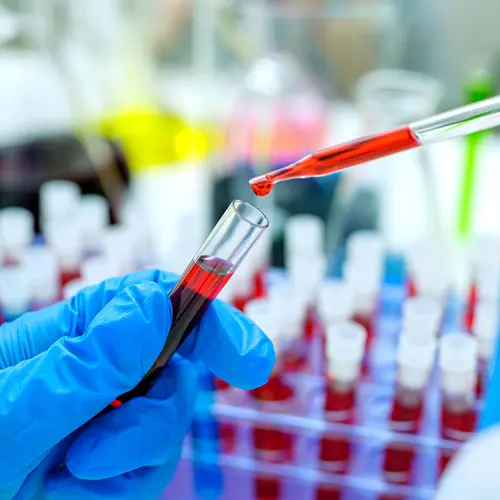Relapsed/refractory multiple myeloma (RRMM) weakens your bones, which can be painful and can raise your risk for breaks even when the cancer is under control. Your doctor can suggest treatments to make you more comfortable and keep your bones from getting worse.
How RRMM Affects Your Bones
RRMM is multiple myeloma that comes back after you’ve been cancer-free or stops reacting to treatment. Cancer cells form in the bone marrow, the spongy inner part of your bones. The cancer cells keep multiplying in the bone marrow and leave little space for healthy cells. They also pull calcium from your bones and cause weak spots (called osteolytic lesions). These changes make your bones more likely to break.
Bone tumors can also cause pain if they press against your nerves.
You’re most likely to notice pain in your:
- Back
- Spine
- Arms
- Legs
- Ribs
Treatments for RRMM-Related Bone Pain
Many treatments can help manage your pain.
Massage. Studies show that massage therapy can ease pain, so you might be able to rely less on pain-relief medicine. Massage could also boost your energy and make you feel less anxious and help with symptoms of depression.
Acupuncture. This form of Chinese medicine has been practiced for thousands of years. Very thin needles, placed just under your skin, have been shown to soothe mild pain. Check with your doctor to see if acupuncture is safe for you to try. If so, find a trained practitioner who uses sterile needles.
Exercise. Gentle physical activities, such as walking, swimming, tai chi, and yoga, can make you feel less stiff and help with nerve pain. Ask your doctor which types of exercise are best for you to try. You could also look into physical therapy. A trained expert can coach you through a series of movements that may soothe your pain while building up your strength.
Relaxation. Techniques like meditation and deep breathing can ease muscle tension, which might stop pain from getting worse. Look for an app or a video to guide you through the steps.
Pain-relief medicine. Always check with your doctor before taking any over-the-counter medicines for pain. Your doctor can make recommendations based on how bad your pain is and any other medicines you take. NSAIDs (nonsteroidal anti-inflammatory drugs) like ibuprofen can sometimes be harmful when you have RRMM, so your doctor may suggest you take acetaminophen instead. Your doctor might also suggest stronger medicines called opioids.
Steroid shot. If you have lower back pain, you might be able to get a steroid shot that includes a numbing agent between your spinal bones and ease swelling.
Bone-building medicines. Bisphosphonates are medicines that soothe bone pain while helping your bones get stronger. Bisphosphonates work by slowing down your body’s natural bone loss. You can take bisphosphonates a lot of ways. For instance, you might take a pill every day or get the medicine through an IV once a year.
Radiation. High-energy beams can shrink bone tumors and stop them from pressing against your nerves. Radiation treatments can also ease pain in the bones, which gives them a chance to heal.
Surgery. Surgeons can add a special type of cement into a damaged bone to strengthen it in operations called kyphoplasty and vertebroplasty. Surgeons can also attach a metal rod, a plate, pins, or screws to a bone so it can better support your weight. These surgeries can help heal breaks or stop them from happening.
How to Protect Your Bones
You can take steps to keep your bones as strong as possible.
Eat healthy foods. Choose a diet rich in fruits, vegetables, whole grains, beans, lean protein (like chicken or turkey), and healthy fats (like nuts and fatty fish).
Stay active. Any weight-bearing activity, where your feet and legs support your body weight, helps strengthen your bones. Weight-bearing activities include walking, hiking, and dancing. Resistance exercises, like lifting weights, can also lower your risk of broken bones. Check with your doctor to see which types of exercise are safe for you to do.
Cut back on tobacco and alcohol. Smoking and drinking alcohol make it harder for your body to get the calcium your bones need to be healthy. If you smoke or drink and need help breaking either of these habits, talk to your doctor.
Get enough calcium and vitamin D. Both are key for bone health. Calcium-rich foods include dairy products, almonds, soy (like tofu), and broccoli. Your body can make vitamin D from being out in the sunlight, but you can also get some from foods such as mushrooms, eggs, and oily fish (like tuna and salmon). Don’t take calcium or vitamin D supplements without first talking to your doctor. They could be harmful. Your doctor must consider any other condition you might have and other medicines you take before recommending you take these supplements.
Drink enough water. You may be more aware of bone pain when you’re thirsty. Try to drink about 8 cups of water every day. You may find it easier to do if you keep a water bottle with you throughout the day.
Be honest about how you feel. Asking for help can feel hard, but it’s important to let your doctor know if you are in pain so you can get the support you need. Managing bone pain early on helps keep pain from getting worse.

